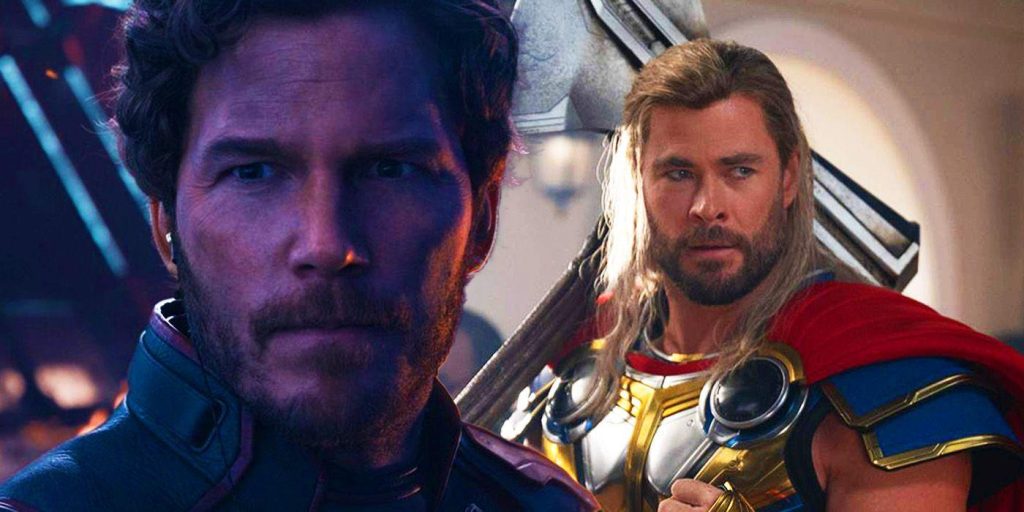Marvel Comics has released the first of its bloody homage variant covers for Blood Hunt, featuring Thor’s severed head in a spine-tingling reference to EC Comics. The variants are set to accompany the “Red Band” editions of Marvel’s vampire crossover event this summer, promising more monstrous gore and violence than the standard issues. Thor’s shocking homage variant cover references a historical horror comic from 70 years ago.
Unlike other unlucky heroes in the crossover, Thor’s death on the Blood Hunt #1 variant cover is just an homage and likely not indicative of what will actually happen in Blood Hunt. Along with a retro look to the title and tagline, the God of Thunder is seen decapitated. An unknown figure holds Thor’s head and a bloodied Mjölnir.
The cover by Leinil Francis Yu is the first of more bloody homage variants to be revealed by Marvel before the event kicks off. Yu references a classic and controversial EC Comics cover that has been credited as part of the backlash leading to the Comics Code Authority.
Thor’s severed head in the variant art highlights the gruesome gore that will be seen in the Red Band editions of Blood Hunt. Leinil Francis Yu’s variant pays homage to artist Johnny Craig’s cover of Crime Suspenstories #22 from 1954, swapping an axe-murderer’s victim and weapon for the all-mighty Thor and his trusted hammer. Crime Suspenstories was published by EC Comics, famous for horror comics like Tales from the Crypt. Johnny Craig’s bloodcurdling cover was used as an example in a Senate investigation connecting juvenile delinquency and comics that led to the foundation of the Comics Code Authority the same year.
Though the publisher didn’t release any more horror comics after 1956, its terrifying tales have stood the test of time and Oni Press is reviving EC Comics this summer. The Comics Code Authority had some responsibility for the fall of EC Comics as its restrictive regulations on comic books prohibited anything including any horror, excessive bloodshed, or gory and gruesome crimes. Marvel Comics stopped adhering to the Code in 2001, but Blood Hunt still marks Marvel’s very first foray into Red Band comics. The first bloody homage variant cover featuring Thor celebrates freedom from the Code’s censorship of comic books.
The grisly depiction of a dead Thor is part of an homage variant series referencing classic horror imagery to be released with the Red Band Blood Hunt issues. The cover being a reference means it’s most likely that Thor won’t actually be decapitated during the vampire event, and most evidence points to him getting out unscathed. The God of Thunder has faced vampires many times in the past, and has even faced Dracula in Thor #332 by Alan Zelenetz and Don Perlin. In this comic, it’s even confirmed that Thor’s godly hammer Mjölnir can easily be used to kill vampires.
Though Thor is predicted to stay alive, the scary imagery serves as a reminder that no character will be safe during the vampiric summer event. With artist Leinel Francis Yu referencing controversial pre-Code horror comics and more vicious variants on the way, Marvel is making it clear that their promise of bloody action and gore will be fulfilled this summer. Marvel Comics’ homage cover with the brutal and R-rated death of Thor hammers home just how shocking and violent the Red Band editions of Blood Hunt will be.
FAQ
What is the significance of the homage variant covers for Blood Hunt?
Marvel’s homage variant covers pay tribute to classic horror imagery, particularly referencing EC Comics’ historical influence on the genre. They are designed to evoke the gruesome and chilling atmosphere of vintage horror comics while promoting the “Red Band” editions of the Blood Hunt series, which promise heightened levels of violence and gore.
Why did Marvel choose to depict Thor’s severed head in one of the variant covers?
The depiction of Thor’s severed head is a deliberate homage to a controversial cover from EC Comics’ Crime Suspenstories #22, which featured similarly shocking imagery. Marvel likely chose this imagery to create buzz around the Blood Hunt series and to underscore the visceral and intense nature of the story, signaling to readers that the series will not shy away from dark and brutal themes.
Does Thor’s depiction on the variant cover indicate his fate in the Blood Hunt series?
No, Thor’s portrayal on the homage variant cover is purely symbolic and does not necessarily reflect his fate in the Blood Hunt storyline. While the cover may suggest a grim outcome for the character, it should be interpreted as an artistic homage rather than a literal depiction of events within the series. Fans can expect Thor to play a significant role in the storyline, but his ultimate fate remains to be seen.
Will Blood Hunt mark Marvel’s first venture into Red Band comics?
Yes, Blood Hunt represents Marvel’s inaugural foray into Red Band comics, a designation typically associated with content that contains explicit violence, gore, or other mature themes. By releasing Red Band editions alongside the standard issues, Marvel is catering to audiences seeking darker and more adult-oriented storytelling experiences within the Marvel Comics universe.
How does the homage cover tie into the broader narrative of Blood Hunt?
While the homage cover serves as a standalone piece of promotional artwork, it contributes to the overall marketing campaign for Blood Hunt by generating intrigue and anticipation among fans. The cover’s reference to classic horror comics and its gruesome imagery effectively convey the tone and aesthetic of the series, preparing readers for an intense and chilling vampire-themed storyline.
